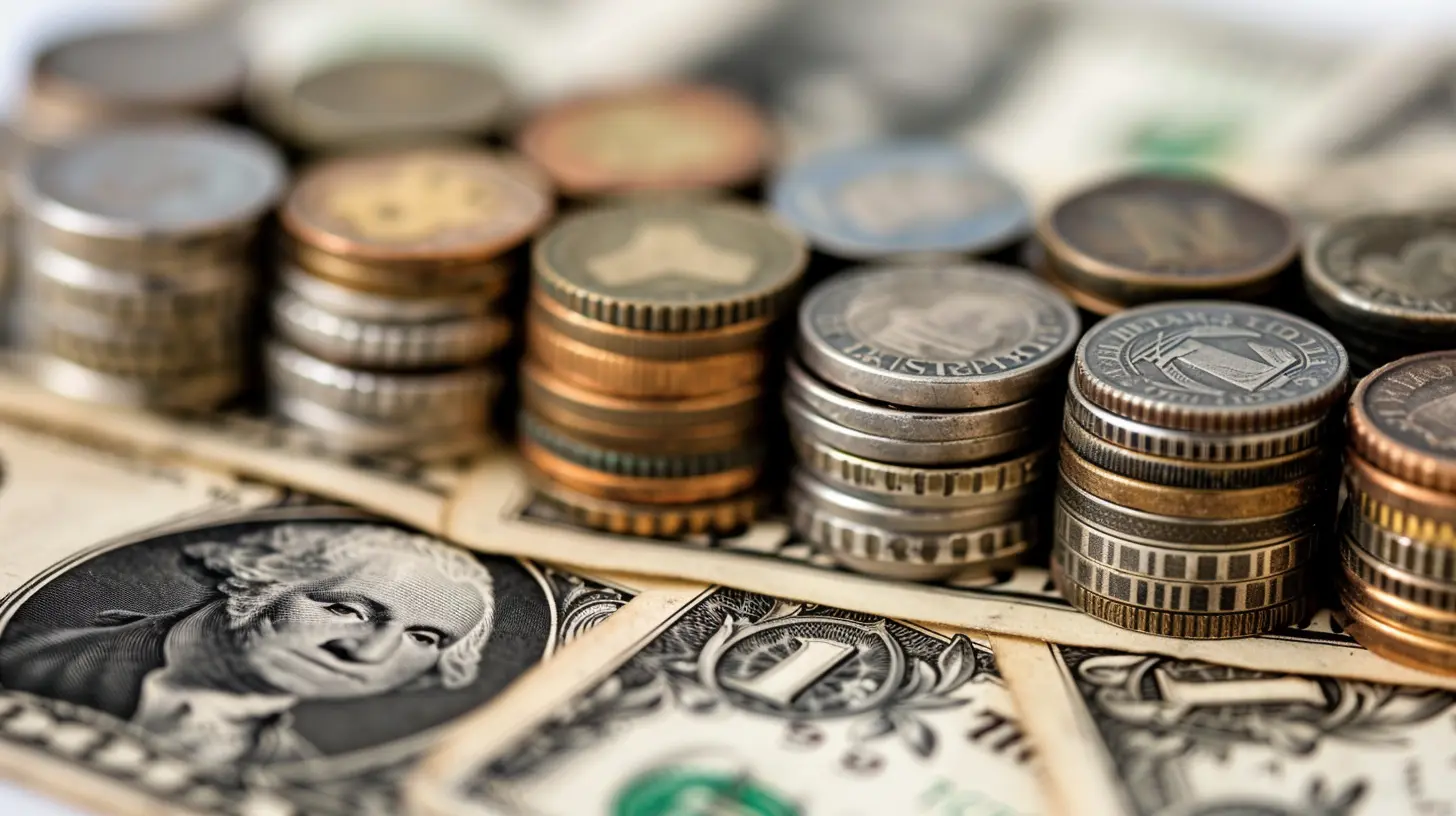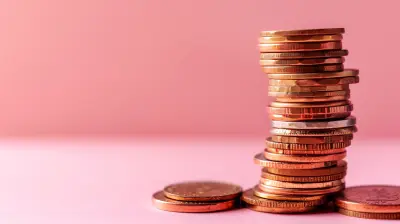How to Break the Paycheck-to-Paycheck Cycle
12 August 2025
Living paycheck to paycheck can feel like you're stuck on a never-ending treadmill—constantly moving but never making real progress. If you're tired of the stress, uncertainty, and financial anxiety that comes with barely scraping by, it’s time to take control of your money.
Breaking free from the paycheck-to-paycheck cycle isn’t about earning six figures or winning the lottery. It’s about making small, intentional changes in how you manage your money. Let’s dive into practical steps to help you gain financial stability and peace of mind. 
1. Understand Where Your Money Goes
Ever feel like your paycheck disappears the moment it hits your account? That's because, without a plan, money tends to slip through the cracks. The first step to breaking the cycle is understanding exactly where your money is going.Here’s what you need to do:
- Track your spending – Use a budgeting app or a simple spreadsheet to record every expense for at least a month.
- Categorize expenses – Break them into essentials (rent, groceries, bills) and non-essentials (subscriptions, dining out, impulse purchases).
- Identify leaks – Are you overspending on takeout? Do you have unused subscriptions? Small leaks sink big ships, and the same goes for your finances. 
2. Create a Realistic Budget
A budget isn't a punishment—it’s a roadmap to financial freedom. Think of it as a tool that helps you tell your money where to go instead of wondering where it went.How to Create a Budget That Works for You:
1. Start with essentials – Cover rent, utilities, food, transportation, and minimum debt payments first.2. Allocate for savings – Even if it’s just $20 per paycheck, build the habit of saving.
3. Set limits on non-essentials – Be realistic. If you love your morning latte, budget for it instead of cutting it out completely.
4. Use the 50/30/20 rule – 50% for needs, 30% for wants, and 20% for savings and debt repayment.

3. Build an Emergency Fund (Even on a Tight Budget)
An emergency fund is your financial safety net. Without one, any unexpected expense—a car repair, medical bill, or job loss—can throw you right back into financial stress.How to Start an Emergency Fund When You're Broke:
- Open a separate savings account that you don’t touch.- Start small—$5, $10, or $20 per paycheck. Small amounts add up over time.
- Set up automatic transfers so you don’t have to think about it.
- Use windfalls wisely—tax refunds, bonuses, or side hustle income can give your fund a quick boost.
Aim for at least $500 to $1,000 to start. Eventually, work your way up to three to six months’ worth of expenses. 
4. Cut Unnecessary Expenses Without Feeling Deprived
No one likes to feel like they’re missing out. But cutting back doesn’t have to mean completely eliminating the things you enjoy.Practical Ways to Reduce Expenses:
✔ Negotiate bills – Call your internet or phone provider and ask for a lower rate. You’d be surprised how often they’ll oblige.✔ Cancel unused subscriptions – Do you really need five streaming services?
✔ Meal plan and cook at home – Reducing takeout can save you hundreds every month.
✔ Use cash-back and discounts – Apps like Rakuten or Honey can help you save on everyday purchases.
✔ Find free or cheap entertainment – Parks, community events, or even a movie night at home can be just as enjoyable.
5. Increase Your Income (Even Without a Raise)
If you've cut costs but still struggle, the next step is increasing your income. While asking for a raise is one option, there are plenty of other ways to bring in extra cash.Ways to Boost Your Income:
💰 Side hustles – Freelancing, rideshare driving, selling handmade goods, or tutoring can add extra income.💰 Monetize a skill – Are you good at writing, graphic design, or coding? Websites like Fiverr and Upwork connect freelancers with paying clients.
💰 Sell things you don’t use – Clothes, electronics, furniture—if you don’t need it, sell it.
💰 Work overtime or a part-time gig – A few extra hours each week can make a significant difference.
6. Tackle Debt Strategically
Debt keeps you stuck in the cycle—every dollar going toward payments instead of your future. Paying off debt frees up your income and reduces financial stress.Best Strategies to Pay Off Debt:
🔹 Debt Snowball Method – Pay off the smallest debt first while making minimum payments on the rest. Once the smallest is paid, roll that payment into the next one.🔹 Debt Avalanche Method – Focus on the debt with the highest interest rate first to save money over time.
🔹 Consolidate debt – If you qualify, a lower-interest loan can simplify payments and reduce interest costs.
🔹 Stop adding new debt – Avoid credit card spending unless you can pay the balance in full each month.
7. Change Your Money Mindset
If you always feel broke, your mindset might be part of the problem. Shifting how you think about money can help you make better financial decisions.How to Develop a Healthy Money Mindset:
✔ Stop thinking paycheck to paycheck – Start thinking long-term about wealth-building.✔ Practice gratitude – Focus on what you have instead of what you lack.
✔ Avoid lifestyle inflation – When your income increases, maintain your current lifestyle instead of upgrading immediately.
✔ Learn about personal finance – Knowledge is power. Read books, listen to podcasts, and educate yourself on managing money.
8. Automate Your Finances for Long-Term Success
The less effort it takes to save and pay bills, the more likely you’ll stick with your financial plan. Automating your finances ensures that money goes where it needs to—without you having to think about it.What to Automate:
✅ Bill payments – Set up autopay to avoid late fees and missed payments.✅ Savings transfers – Automatically move money into your savings or emergency fund.
✅ Debt payments – Schedule extra payments toward high-interest debt.
When your financial system is on autopilot, you eliminate the temptation to spend money irresponsibly.
Final Thoughts
Breaking the paycheck-to-paycheck cycle isn’t about luck—it’s about making intentional choices. By tracking your expenses, budgeting wisely, cutting unnecessary costs, boosting your income, and shifting your mindset, you set yourself up for a future filled with financial freedom.It won’t happen overnight, but with consistency and discipline, you’ll build a life where you’re no longer waiting for the next paycheck just to survive. Instead, you’ll have the peace of mind that comes from financial security.
So, are you ready to take control of your money and break free from the cycle? Start today—your future self will thank you.
all images in this post were generated using AI tools
Category:
Financial LiteracyAuthor:

Harlan Wallace
Discussion
rate this article
1 comments
Rosalie Jimenez
Great tips! Small changes can lead to big financial progress!
September 11, 2025 at 12:25 PM

Harlan Wallace
Thank you! Absolutely, even small adjustments can make a significant impact over time. Glad you found the tips helpful!


